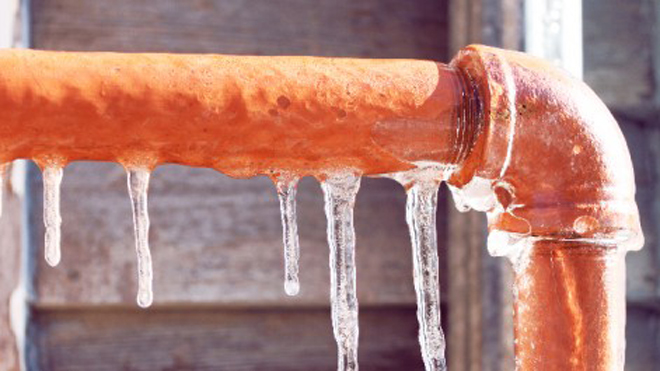Do you find yourself interested in resources on Helpful Tips to Prevent Frozen Pipes this Winter?

Cold weather can damage your plumbing, particularly by freezing pipelines. Below's exactly how to stop it from taking place and what to do if it does.
Introduction
As temperatures decrease, the risk of icy pipelines increases, possibly leading to costly repairs and water damages. Comprehending how to avoid frozen pipelines is vital for property owners in cool climates.
Prevention Tips
Shielding susceptible pipelines
Cover pipes in insulation sleeves or utilize heat tape to protect them from freezing temperatures. Focus on pipelines in unheated or external locations of the home.
Home heating methods
Maintain indoor rooms properly heated up, particularly areas with plumbing. Open cabinet doors to allow cozy air to distribute around pipes under sinks.
Exactly how to identify frozen pipelines
Seek reduced water flow from faucets, uncommon odors or sounds from pipes, and noticeable frost on subjected pipes.
Long-Term Solutions
Structural changes
Think about rerouting pipes far from exterior wall surfaces or unheated areas. Include additional insulation to attic rooms, basements, and crawl spaces.
Updating insulation
Purchase top quality insulation for pipes, attic rooms, and walls. Proper insulation aids keep constant temperatures and reduces the risk of icy pipelines.
Protecting Exterior Plumbing
Yard hose pipes and exterior faucets
Disconnect and drain pipes garden hose pipes prior to winter. Set up frost-proof spigots or cover exterior taps with shielded caps.
Recognizing Frozen Pipes
What triggers pipes to freeze?
Pipes freeze when exposed to temperatures below 32 ° F (0 ° C) for extended durations. As water inside the pipelines freezes, it broadens, putting pressure on the pipe walls and potentially causing them to burst.
Threats and problems
Frozen pipes can result in water supply disturbances, home damage, and pricey repair services. Burst pipelines can flood homes and create extensive architectural damage.
Indicators of Frozen Water Lines
Identifying icy pipelines early can prevent them from rupturing.
What to Do If Your Pipelines Freeze
Immediate actions to take
If you believe frozen pipes, maintain taps open to soothe pressure as the ice melts. Make use of a hairdryer or towels taken in warm water to thaw pipes slowly.
Final thought
Avoiding frozen pipes calls for positive procedures and quick reactions. By recognizing the causes, signs, and preventive measures, house owners can shield their pipes throughout cold weather.
6 Proven Ways to Prevent Frozen Pipes and Protect Your Home
Disconnect and Drain Garden Hoses
Before winter arrives, start by disconnecting your garden hoses and draining any remaining water. Close the shut-off valves that supply outdoor hose bibs and leave the outdoor faucet open to allow any residual water to drain. For extra protection, consider using faucet covers throughout the colder months. It’s also important to drain water from any sprinkler supply lines following the manufacturer’s directions.
Insulate Exposed Pipes
Insulating your pipes is an effective way to prevent freezing. Pipe insulation is readily available at home improvement stores and is relatively inexpensive. Pay close attention to pipes in unheated areas such as the attic, basement, crawl spaces, or garage. Apply foam insulation generously to create a buffer against the cold. You can also wrap your pipes in heat tape or thermostat-controlled heat cables for added warmth.
Seal Air Leaks
Inspect your home for any cracks or openings that could let in cold air. Seal any holes around the piping in interior or exterior walls, as well as the sill plates where your home rests on its foundation. Additionally, make sure to keep your garage door closed unless you’re entering or exiting. Leaving it open creates a significant air leak that can lead to frozen pipes.
Allow Warm Air Circulation
During cold snaps, it’s essential to allow warm air to circulate evenly throughout your home. Leave interior doors ajar to promote better airflow. Open kitchen and bathroom cabinets to help distribute heat consistently around the rooms. If you have small children or pets, be sure to remove any household chemicals or potentially harmful cleaners from open cabinets for safety.
Let Faucets Drip
A small trickle of water can make a big difference in preventing ice formation inside your pipes. When temperatures drop significantly, start a drip of water from all faucets served by exposed pipes. This continuous flow helps prevent the water from freezing. Additionally, running a few faucets slightly can relieve pressure inside the pipes, reducing the chances of a rupture if the water inside does freeze.
https://choateshvac.com/6-proven-ways-to-prevent-frozen-pipes-and-protect-your-home/

Hopefully you enjoyed our topic on How to Prevent Your Pipes From Freezing. Thanks so much for spending some time to read through our piece of content. I beg you take a moment to promote this write-up if you enjoyed reading it. Thanks so much for taking the time to read it.
Book A Service